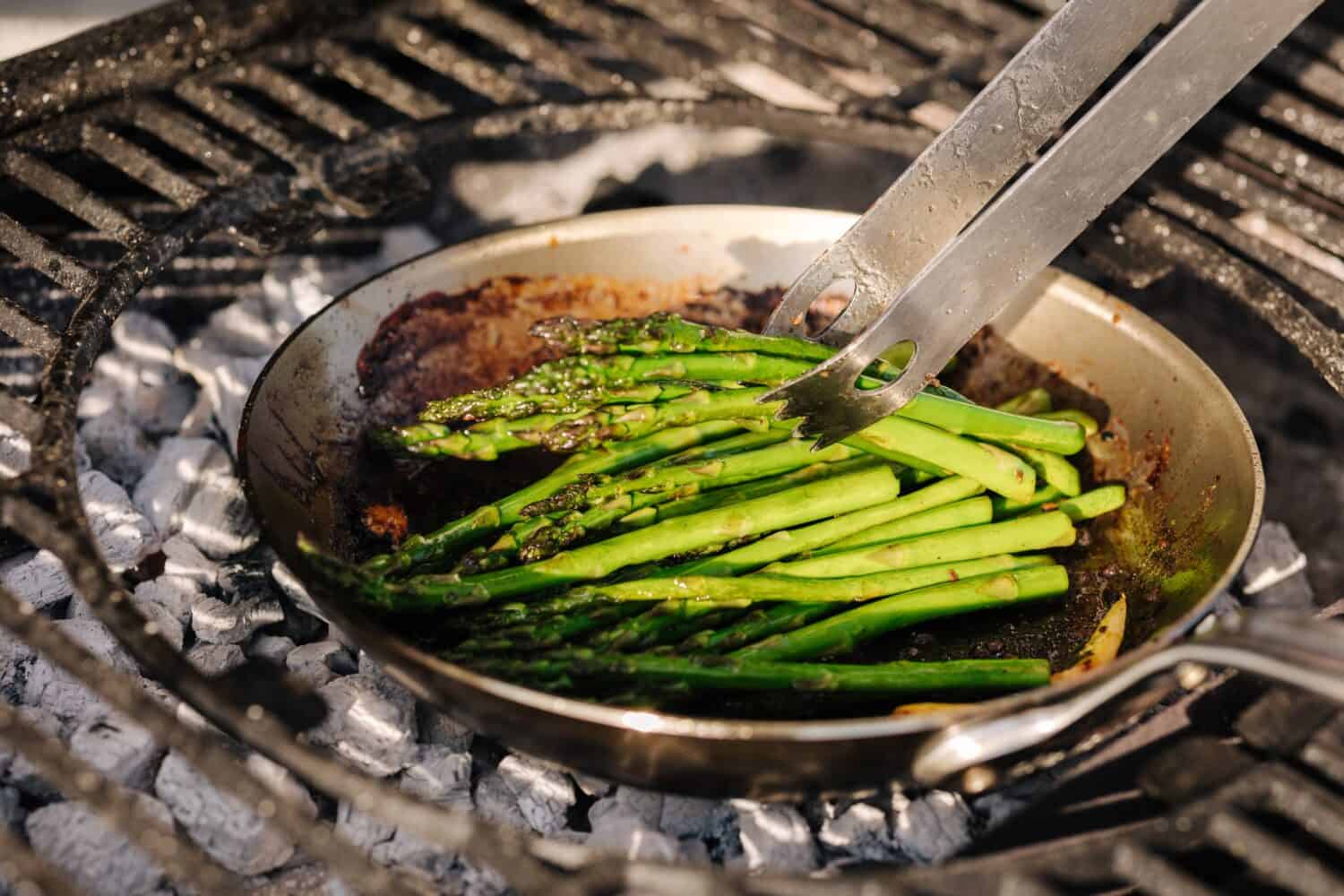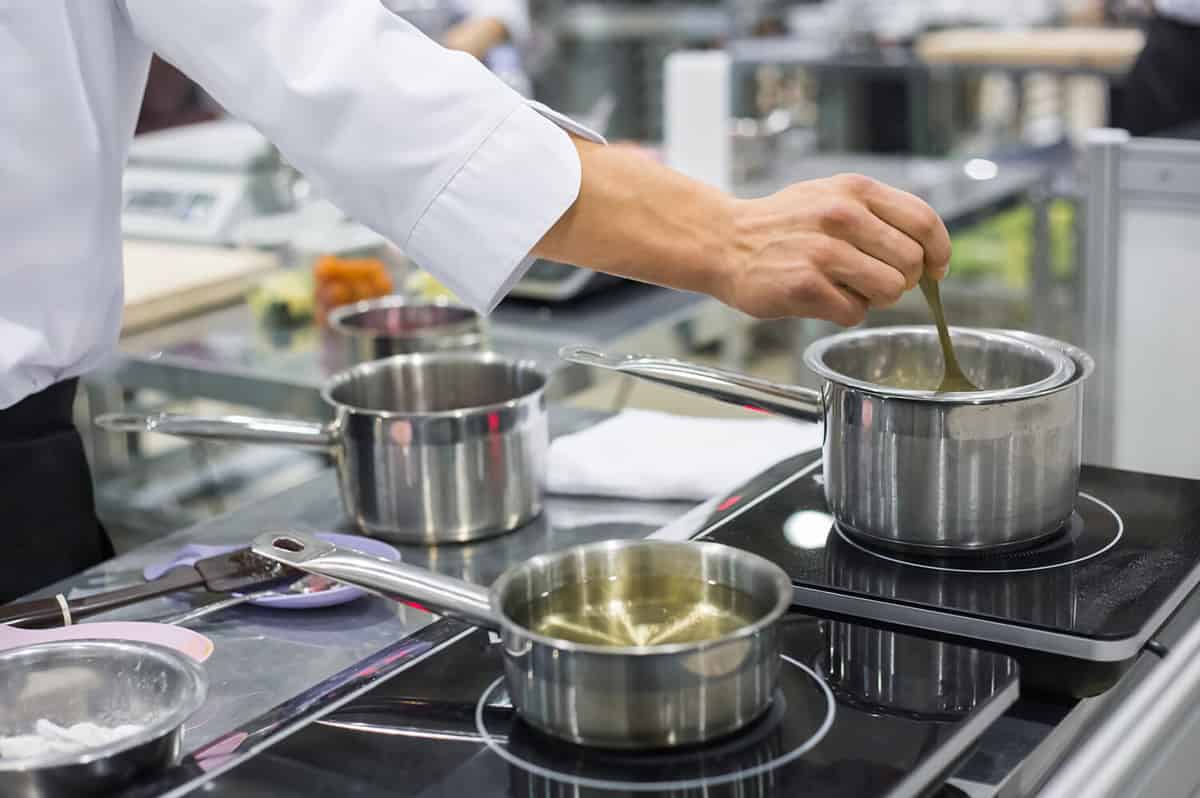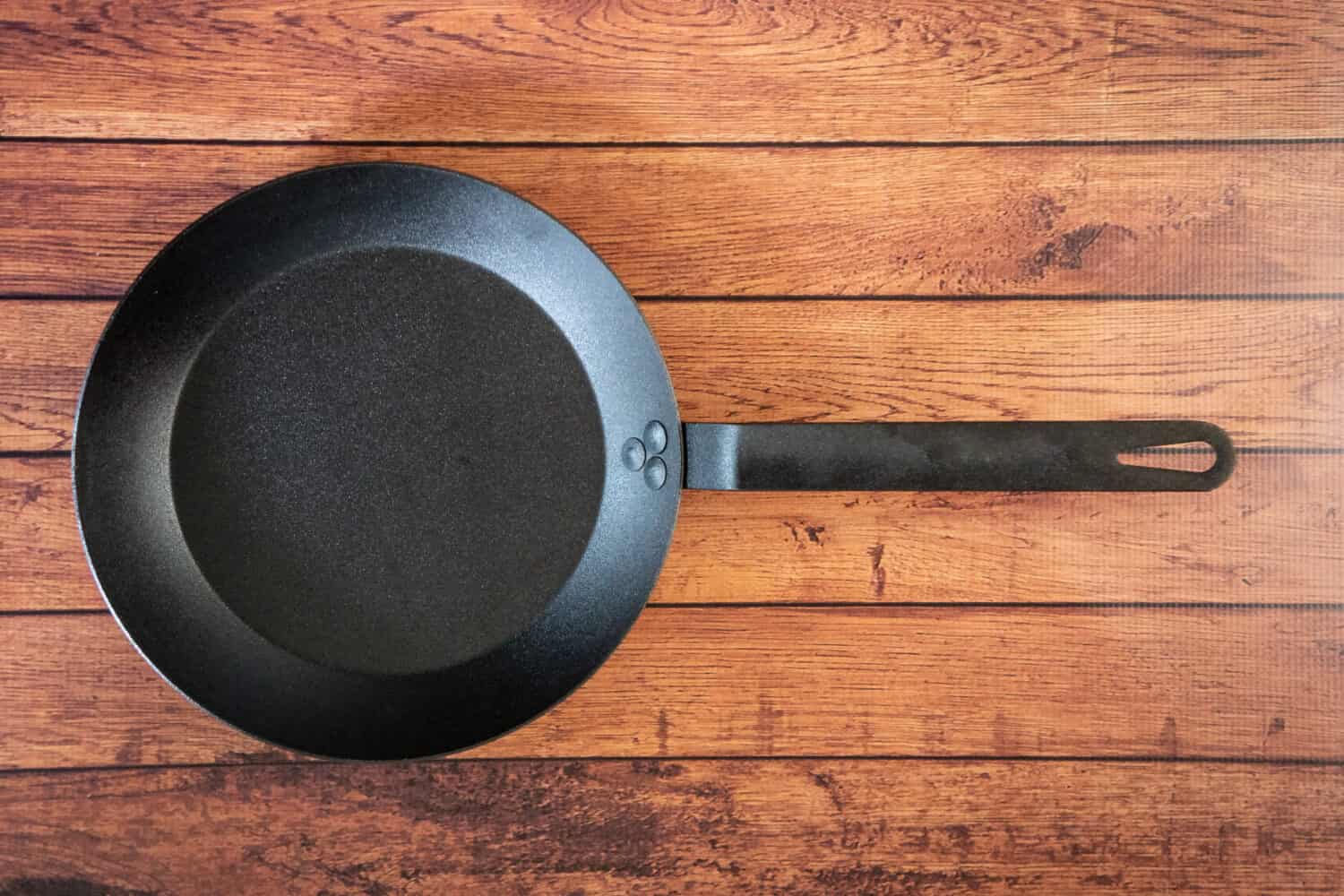You have many options when it comes to the type of pan or cooking surface you choose to make your meals. Over the years, different types of steel and metal have come out, and frankly, it can be hard to know what material is best for your kitchen. Today, we’re going to tell you about the reasons to avoid cooking with carbon steel. We’ll describe the material, the cons of using it, and other food for thought that you should consider when equipping your kitchen.
What is Carbon Steel?
Before we tell you the reasons to avoid cooking with carbon steel, we should tell you a bit more about the product. Carbon steel is basically a combination of stainless steel and cast iron, and it uses the benefits of both. It’s made of a blend of carbon and iron. The substance has heat retention, non-stick properties, and it also offers cooking speed and heat control like stainless steel.
This is one of the most trendy cooking materials of recent years. Carbon steel has a French origin, but it’s used in kitchens around the globe. In France, it’s manufactured from raw materials, and it's designed to last a long time.
Reasons to Avoid Cooking with Carbon Steel

Carbon steel can do the trick but they've tricky to clean.
©Studio113/Shutterstock.com
So far, carbon steel may seem like a great product that offers a lot of upside, but it’s far from perfect. Here are the reasons why you may want to avoid cooking with carbon steel at all costs.
1. Prone to Rusting
Carbon steel has a high iron content, and because of that, it can rust rather quickly, especially when it’s exposed to moisture. The problem is that the moisture can come from anything, from being in a humid environment to simply being cleaned repeatedly. No one wants to have rust on their cookware, so the potential short lifespan may be the only reason you need to avoid this cookware.
2. Prone to Discoloration
Carbon steel is also susceptible to discoloration, especially if you don’t season the recipe well. It can be so bad that even one use without the right amount of seasoning can ruin the pan. The potential rust and discoloration occurs because there’s not enough chromium in carbon steel to create a necessary corrosion-resistant layer, so it allows oxygen to bond and cause rust. If there isn’t rust, but there is discoloration, that’s not necessarily the end of the world. This pan is not meant to be pretty. It will still function the same.
3. More Complicated to Clean
Because excessive cleaning can rust your carbon steel, you have to go through a more convoluted method to clean the material after each use. The most efficient way to clean a carbon steel pan is to wipe it out with a paper towel to remove any tough residue, which can be messy. If you still have leftover food inside, you can try two tablespoons of neutral oil and two tablespoons of coarse salt and rub against the food bits.
In addition to avoiding water, you should also avoid soap. You also shouldn’t run the material through the dishwasher. If all else fails, try steel wool, but use caution.
4. You Can’t Cook Acidic Food
Like similar products including cast iron, carbon steel doesn't do great with acidic foods like tomatoes or recipes that include lots of wine, vinegar, and citrus. The reason is that the acid can strip the seasoning from the pan. That doesn’t mean you can’t use acid at all. A splash of vinegar or a small amount of lemon will be fine.
5. The Handles Can be Hot to Handle
Most carbon steel pans that you’ll find on the market will have flat handles that are connected directly to the base of the pan. The heat will transfer to the handles quickly, so either use a pot holder or a silicone sleeve to protect your hands.
6. Food Easily Sticks to the Pan
If you don’t properly season your food then the ingredients will likely stick to the pan. It’s especially important to season it when you first buy the pan, or your food will stick to it like a magnet.
7. Hard to Find and Buy
Though you can find carbon steel by searching online, the material is not as common as other forms of cookware, like aluminum or stainless.
8. Uneven Heating Surface
One of the benefits of carbon steel is that it heats up quickly. However, if you have a larger pan, then you may find that uneven cooking surface means that some of the food in the pan will cook faster in some areas than others.
Are There Any Good Points?
We talk about why you should avoid cooking with carbon steel, but there have to be some upsides, right? There are.
Durability – The biggest perk of carbon steel is its durability since it's made by heating iron until it’s glowing red hot. Then, carbon is added. This process makes it so the material is tough and able to withstand the hottest temperatures. Although they may become discolored, the pans won’t break any time soon. In fact, if you clean it properly, it can last a lifetime.
Versatility – As long as you properly season the food, carbon steel can be useful for cooking just about anything from omelets to bread. You can also use carbon steel in a variety of ways. It can be used on stovetops and on a grill.
Non-Toxic – Unlike many other pan materials that often have coatings that can be bad for you over time, carbon steel doesn’t have that problem. Even if you cook at high temperatures, there's no risk of chemicals getting into your food.
Affordable – Like many other pan options, carbon steel can be relatively affordable once you find it. You can often find a set for less than $100.
Lighter – Despite its tough exterior, carbon steel is much lighter than other forms of cookware, so it’s suitable for all cooks.
Alternatives to Carbon Steel

There are various pot and pan options for your cooking needs.
©Zyabich/Shutterstock.com
If you’re not sold on carbon steel, there are other alternatives that you can try that will give you similar results.
Ceramic Non-Stick – This is a popular substitution to traditional non-stick pans that allow easy food release. They’re coated with natural materials, usually sand-derived silicon. Plus, ceramic non-stick does not release toxic fumes and many people say it’s better for the environment.
Cast Iron – With the right seasoning, cast iron provides the same cooking experience as non-stick. It’s highly durable and can last for decades with the proper care. You can even pass it down through generations. Best of all, it has a natural non-stick surface. It’s also a very affordable option.
Enameled Cast Iron – This is a great non-stick option without a lot of the necessary maintenance. The enable glaze stops food from sticking, especially when it’s seasoned. It’s also easier to clean with warm water and mild detergent. You can also get the pan in more colors.
Stainless Steel – Stainless options cook quickly and they provide an even heating surface. They’re also boiler safe and can be used on all cooktops. Plus, they don’t release toxic fumes. Best of all, stainless steel provides a non-stick surface without the need of excessive seasoning. However, you may want to add a little oil. The other benefit is that the stainless steel grips the food, so you can get a great sear on your steak. However, the downside is that after that sear, the pan can be hard to clean.
Conclusion
These are the reasons why we recommend you avoid cooking with carbon steel. While there are perks, there are also downsides. If you love cooking, then feel free to try this variety. Even with the cons listed here, it could still end up being a perfectly suitable pan for your needs.
The image featured at the top of this post is ©Jaimieandkyleshootstock/Shutterstock.com
